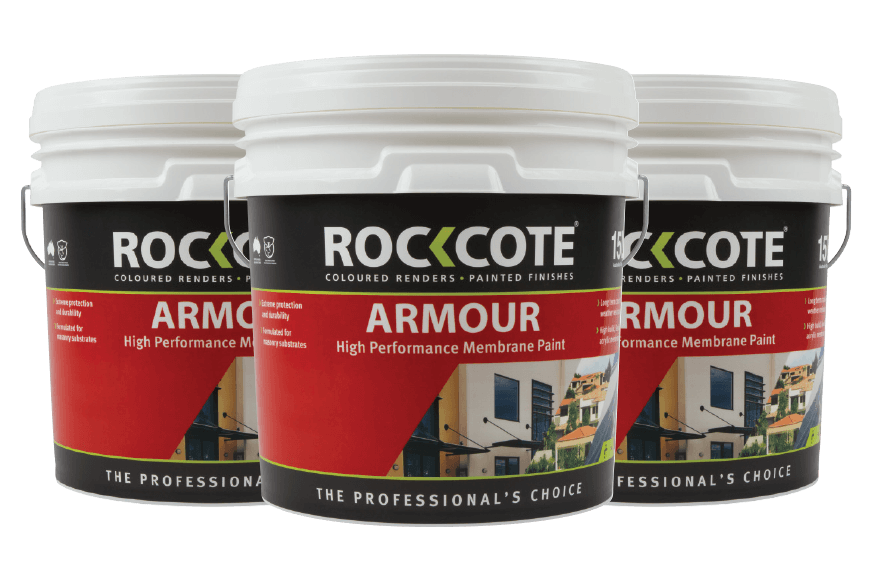Paint on a rendered home is not just there to look good. It protects both the coating system and your home against the weather elements.
Render and paint systems consist of several layers that work together. The right products, adequate surface preparation, sufficient adhesion and correct application all play a part in ensuring the system works effectively.
Most render systems need a protective film to shield the system from the elements. That protective film is paint, or ideally, membrane paint.
A membrane is a pliable structure that forms a barrier or lining. Thus, the term membrane is used to describe a type of exterior paint that offers greater thickness, protection and elasticity compared with standard paints.
Choosing the right exterior paint for overcoating render is important for long-term protection and reducing maintenance. The best render paint is a membrane paint.
Paint for render: what to look for
- Thickness
Thickness equals protection. In a two-coat system, there is a substantial difference in thickness of a standard exterior paint, and a membrane paint. Standard exterior paint: typically around 50 microns thick Rockcote Armour: typically more than 170 microns thick. To put this into context, the thickness of a fine human hair is about 30 microns. To compare products, refer to Dry Film Thickness on the Technical Data Sheet. - Crack-bridging ability

Fine surface cracks will cause premature aging of the paint system and can quickly grow into major cracks that require rectification work. Membrane paint has built-in elasticity to accommodate minor cracking, known as “crack-bridging” ability. Rockcote Armour has the ability to bridge cracks up to six times wider than standard paint (up to 1.2mm). Rockcote Armour Flex can bridge cracks up to 2.9mm. - Weather resistance
Most render systems rely on the paint layer to provide water repellence and weather resistance. If the integrity of the paint is compromised, the system can fail, leading to a range of issues such as mould, cracking, delamination and, in severe cases, water ingress into the home. The best render paints are those with thickness, crack-bridging ability and water repellence that are designed for render. Rockcote Armour has been formulated to deliver the water repellence and weather resistance required to protect render systems. - Low maintenance
Most manufacturers recommend that exterior render systems are regularly inspected by the homeowner and washed down with a hose annually. As a guide, a home coated in standard paint will require repainting in 5-7 years; a membrane such as Rockcote Armour should last 10-12 years. Factors affecting this timeframe include maintenance routine, quality of application, colour and location (dark colours and coastal properties may require repainting more frequently). - Dirt and mould resistance
Cracking, damp areas and dirt build-up can lead to the growth of mould. As well as causing unsightly dark stains, mould can affect the performance of the paint. Rockcote Armour has built-in mould and mildew resistance help to reduce the risk of mould growth. Using a membrane paint such as Rockcote Armour over render will provide a longer lasting, thicker coating with greater ability to resist minor cracking compared with a standard exterior paint. - Paint and texture
Finally, don’t be concerned about repainting changing the appearance of your texture coating. A fresh coat of membrane paint or paint over existing sponged render or texture will not change the textured appearance of the surface.
